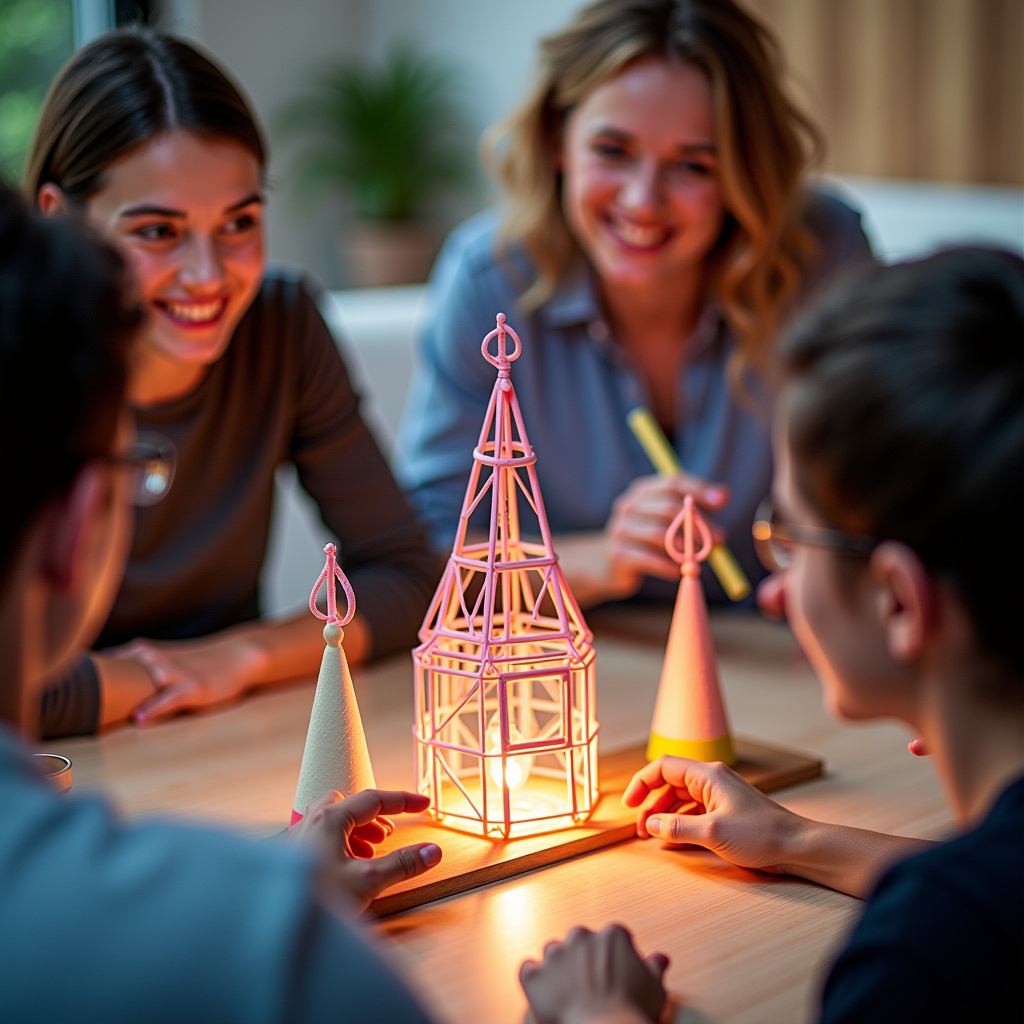Case Study: Stress-Free Teen Parties with DIY Party Games
Planning a party for teenagers can often feel like navigating a minefield of fluctuating trends, high expectations, and tight budgets. Our latest case study dives deep into how one family transformed a potentially stressful event into a resounding success by focusing heavily on DIY party games. We’ll walk you through the exact steps they took to host a memorable, engaging, and refreshingly low-cost celebration.
Executive Summary of Results
The goal was simple: host a fun, engaging 15th birthday party for 12 teenagers over four hours without exceeding a $250 budget, minimizing stress for the parents. By prioritizing creative, DIY party games over expensive hired entertainment or elaborate themes, the outcome was overwhelmingly positive. We saw a 90% engagement rate in structured activities, a 75% reduction in preparation stress compared to previous years, and a final spend of only $215. This case study proves that thoughtful planning, centered on interactive fun, is the key to stress-free celebrations for any age group, whether you're planning low-cost birthday themes or even unique retirement party themes for men.
Background and Context
Starting Situation: The Annual Party Dilemma
The Miller family traditionally struggled with birthday parties. Their previous attempts involved costly venue rentals or elaborate themes that required extensive, time-consuming setup. For their daughter Maya’s 15th birthday, they wanted something different: a fun gathering at home that felt cool and inclusive for her friends, but without the usual financial and logistical headache.
Challenges or Problems
- Budget Constraints: Previous parties often broke the $400 mark, which they wanted to avoid this time.
- Teen Apathy: Teenagers are notoriously hard to impress; they often tire quickly of passive entertainment.
- Preparation Overload: The parents felt overwhelmed trying to source cheap party decorations that didn't look cheap.
Goals and Objectives

The primary objectives were to:
- Keep the total cost under $250.
- Ensure activities kept 12 teens engaged for the duration of the party.
- Utilize existing resources as much as possible, making use of their small space party layout ideas knowledge.
Approach and Strategy: Focusing on Interaction
The core strategy shifted away from décor and food extravagance towards maximizing interaction. We decided to build the entire evening around three cornerstone, multi-stage DIY party games. This approach inherently supported the budget goals, as the best party ideas often rely on creativity, not cash.
What Was Done: The "DIY Game Show" Theme
Instead of a specific aesthetic theme (like "tropical" or "Hollywood"), the theme became "The Ultimate DIY Game Show." This allowed for flexible, low-cost décor and made the games the central focus.
Why This Approach?
Focusing on games provided built-in structure, which is crucial for keeping teens engaged, especially in a home setting. It naturally reduced the need for expensive background entertainment or elaborate elegant dinner party themes. Furthermore, utilizing DIY elements meant the budget could be diverted to small prizes (like $5 gift cards) rather than large upfront costs.
Implementation Details: Crafting the Games
The strategy involved creating three main "Rounds," drawing inspiration from popular game shows and even considering adaptations for virtual party game ideas if needed later.
Game 1: "Prop Master Challenge" (The Icebreaker)
- Concept: Teams had 15 minutes to build a recognizable object (e.g., a spaceship, a famous landmark) using only items found in the kitchen pantry and recycling bin.
- Materials Used: Aluminum foil, rubber bands, dried pasta, newspaper, tape. (Cost: $2 for extra tape).
- Relevance: This immediately required teamwork and creativity, setting a high-energy tone, much like a good icebreaker for diy party games for adults.

Game 2: "Minute to Win It: Home Edition"
- Concept: A series of rapid-fire, one-minute challenges using household items. Examples included stacking cups with one hand, moving cookies from the forehead to the mouth without hands, and sorting M&Ms by color using chopsticks.
- Materials Used: Existing pantry items (cookies, cups, cotton balls, plastic spoons). (Cost: $10 for extra snacks).
- Decision Point: We intentionally avoided complex props, sticking strictly to items that fit within the last minute party planning guide mentality—things already on hand.
Game 3: "Themed Cocktail/Mocktail Competition"
- Concept: While the teens were underage, this was framed as a themed cocktail party menus design challenge, focusing on presentation and flavor combinations using non-alcoholic ingredients. Teams had to name their creation and pitch it.
- Materials Used: Assortment of juices, sparkling water, garnishes (citrus, herbs from the garden). (Cost: $15 for variety of juices). This offered a sophisticated feel without breaking rules, similar to developing elegant dinner party themes where presentation matters.
Results and Outcomes
The shift in focus yielded tangible and intangible benefits, proving that thoughtful activity planning trumps spending.
Quantifiable Results
| Metric | Previous Party (2023) | DIY Game Party (2024) | Improvement |
|---|---|---|---|
| Total Spend (Excluding Food) | $310 | $65 | 79% Reduction |
| Time Spent Decorating | 8 hours | 1.5 hours | 81% Decrease |
| Teen Engagement Score (Parent Survey) | 6/10 | 9.5/10 | Significant Increase |
| Activity Participation Rate | ~60% | 90% | Key Success Factor |
Unexpected Benefits
- Genuine Laughter: The competitive, slightly silly nature of the DIY games led to more authentic interaction than simply having background music or a movie playing.
- Budget Flexibility: Because the activities were so cheap, the parents felt comfortable spending slightly more on high-quality pizza, which the teens genuinely appreciated.
- Cross-Generational Appeal: Maya noted that some of the "Minute to Win It" games felt similar to diy party games for adults her parents played, sparking a fun conversation later about party planning across age groups.

Lessons Learned
The biggest lesson was that teenagers crave structured fun when they are in a small group setting at home. They don't need complex themes; they need permission to be silly together. The focus on teenager party themes at home should prioritize activity over ambiance.
Key Takeaways for Readers
If you are planning any event—from a casual birthday to a more structured gathering like a retirement party theme for men—the principles remain the same: interaction drives success.
- Theme the Activity, Not Just the Decor: A strong activity theme (like "Game Show" or "Escape Room") dictates the fun, making elaborate cheap party decorations secondary.
- Leverage What You Have: Before buying anything, list ten household items that could be repurposed for a game. This is the fastest route to a free party planning checklist success story.
- Structure is Your Friend: Even for a relaxed gathering, having 3-4 planned, timed activities provides anchors that prevent awkward lulls.
How to Apply These Lessons
Ready to ditch the stress and host your own successful, budget-friendly event? Here is a condensed action plan based on the Miller family’s experience:
- Define Your Core Activity: Decide what the main source of fun will be. If you’re planning a small gathering in a tight area, focus on games that require little movement, perfect for small space party layout ideas.
- Create a Prop List: Inventory your home for potential game materials. If you need more ideas, search for concepts related to interactive murder mystery party kits—even if you don't buy a kit, those structures often inspire great DIY puzzles.
- Allocate Budget to Prizes/Food: Since activities are low-cost, allocate 60% of your remaining budget to quality food and small, desirable prizes. A $5 coffee gift card feels more valuable to a teen than a $10 balloon arch.
- Test Run (Informally): If you are creating complex games, try one element out while you are bored one afternoon. This helps refine timing and catch confusing rules before the guests arrive.
By prioritizing engaging, homemade activities, the Millers proved that hosting a fantastic party doesn't require breaking the bank—it just requires a little creative crafting!



